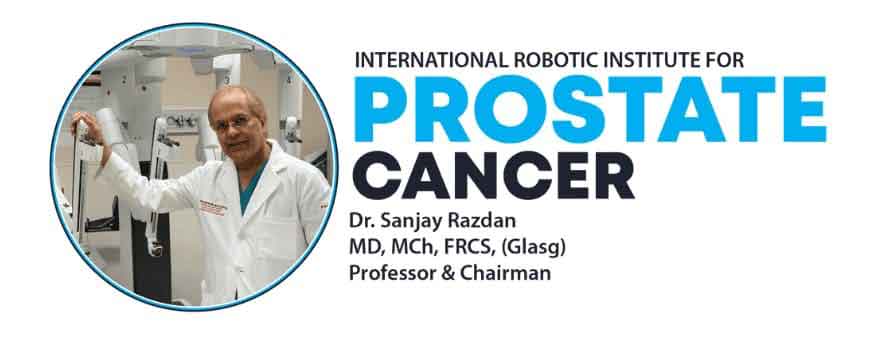
Being diagnosed with prostate cancer is life changing. The diagnosis and treatment can take significant physical, emotional, and mental tolls on those afflicted with the disease, as well as their loved ones. This is why selection of the correct urologist who can guide men with newly diagnosed prostate cancer is crucial.
After diagnosis, men with prostate cancer discuss the various options for treatment or monitoring of their disease. Observation and active surveillance are two options for men who do not qualify for or do not seek immediate treatment. Additionally, there are surgical and nonsurgical options. Of the nonsurgical options, radiation therapy with external beam or radiation seeds, as well as various focal therapies, exists. The latter option incorporates treatment options such as HIFU and cryoablation, and allows for targeted killing of prostate cancer cells.
Surgery represents definitive treatment for localized prostate cancer. In a radical prostatectomy, urologic surgeons remove the prostate and seminal vesicles, and create a new connection between the bladder and the urethra. As with most other treatment options, surgery has a potential for side effects, mainly erectile dysfunction and urinary incontinence. These side effects are not minor and can prove to be devastating for some patients. This is why surgeon experience and surgeon OUTCOMES make all the difference.
Historically, all prostatectomies were performed with a large open incision. Over the past 25 years, however, these surgeries have become more commonly performed minimally invasively, especially since the advent of robotics in urology. The robotic prostatectomy is the preferred method of surgically treating prostate cancer today. Robotic surgery is incredibly precise, allowing a magnified view of the prostate, its vascular supply, and the hammock of nerves that surround the gland. While robotic prostatectomy may be common, the outcomes from surgery can vary widely. It requires immense skill on the part of the surgeon to ensure proper cancer eradication as well as maintenance of urethral length for urinary continence and nerve preservation for erectile function.
These skills take time, patience, and ability on the part of the surgeon. For men who desire the best outcomes after surgery, both oncologically and functionally, choosing the right surgeon is everything. While some urologists boast their case numbers, others let their work do the talking in the form of video patient testimonials. In other words, you may be able to do a surgery 10,000 times, but if your patients are consistently wet and impotent, then what is the benefit of all those reps? Is quality of life just being routinely sacrificed on the altar of oncologic control?
Be on the lookout for direct testimonials from patients who have undergone robotic prostatectomies. Seek out their personal experience. Are they cancer free? Are they dry? Are they able to maintain a sex life? Do not simply look at number of surgeries performed by a surgeon, but focus on number of SUCCESSFUL surgeries and SATISFIED patients.
Wouldn’t you want to go to the urologist who is able to provide patients with the trifecta of urinary continence, erectile function, and cancer control? Wouldn’t you trust the urologist who has the most video patient testimonials attesting to his or her abilities? Your choice to undergo a robotic prostatectomy is not just about treating prostate cancer. It is about your ability to still get an erection or avoid wearing a diaper.
The choice is clear. For anyone reading this, if you have been diagnosed with prostate cancer and are contemplating robotic prostatectomy and want to have the very best results possible with the fewest side effects, look for video testimonials. The urologist who can show you the most satisfied patients should be your choice, no matter where you are in the country or in the world. You have one life, you have one prostate, you have one chance to do it right, make the choice based on experience, results, and proof.






